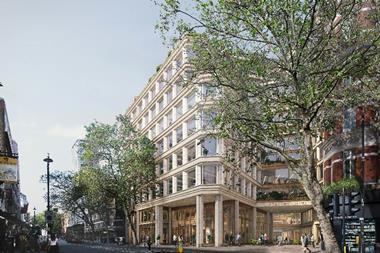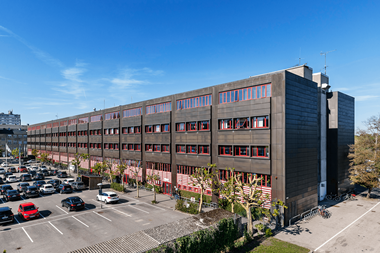Real estate fundamentals and business dynamics in the US are strong, but caution is the byword as heightened risks start to appear – these were the messages delegates heard this week at the AFIRE Annual Membership Meeting in Washington DC.
The economic scene was set by Joe Gyourko, a professor at the Wharton School of the University of Pennsylvania and the director of the Zell/Lurie Real Estate Center. “The risk is less in the economy,” he told the 300 delegates. “The risk is in your ability to buy right.”
He predicted modest GDP growth of 2% to 2.5% over the next 12 months and around job growth of around two million. Although the Federal Reserve is likely to end quantitative easing in October and rates will go up modestly, this would come as no surprise to anyone, he said.
“A slow growth recovery – for real estate, that’s our friend,” said Steven Furnary, chairman and CEO, Clarion Partners.
The economic crisis helped identify lasting trends in the US economy that are negative for retail but positive for multifamily, Gyourko said. In the 1980s and 1990s, he explained, “the US was a job creation machine,” but that changed in 2000, when the rate of job creation slowed dramatically.
“Something went wrong with our labour market before the crisis,” he said. The economy continued to grow despite this, thanks to a growth in consumption as a share of national output, accompanied by a decline in personal savings. “We thought we were saving through an increase in asset values,” he said, counting on rising home values and a strong stock market.
Now, Gyourko said, “the trend of growth in consumption is over, and this represents a danger for the retail sector and investors in retail space. “In the past, that rising tide saved retail. Today it’s not going to save you if your idea isn’t good.”
A decline in home ownership, triggered by the crisis, also looks to be a permanent change, Gyourko said. At the height of the boom, home ownership stood at 69%, up from a historical constant around 64%, representing six million additional homeowners. “That has completely unwound, and I think that number will tick down further,” he said, noting that although their has been a recovery in jobs, this has not been accompanied by an uptick in mortgage applications.
Some of this has to do with demographics. Young people are buying starter homes in smaller numbers, partly because they are more interested in living in city centres and in mixed-use communities, and also because of financial constraints. Backing this up is the fact that reverse-commuting is on the rise, as people living in urban centres are making a lifestyle choice that means travel out to suburban offices.
‘Red light’ issues
While some things seem new, lessons from the past were not far from attendees’ minds. “We remember that in 2006–07, it felt very much the same. And we also remember what happened after that—that’s on our minds,” said Jacques Gordon, global strategist, LaSalle Investment Management. “We are not overleveraged as a country, and we are not looking at the same systemic issues. But it is as frothy a market as any of us have seen.”
Gordon identified some “red light” issues. One example: when pricing gets above replacement cost, which is starting to happen with luxury residential in New York City. Inflows of “flight capital” and “ego capital” into the US are also a concern. “When that starts to migrate into our space, it is a signal that it is time to get out.”
There’s both numerator and denominator effects in action – more foreign investors, with more money, are seeking US investments as a safe haven. Around two-thirds of sovereign wealth funds have upped their real estate allocations in the US, said Steven Kohn, head of equity, debt and structured finance at Cushman & Wakefield.
Jason Kern, CEO of the Americas at LaSalle Investment Management, also saw the need for caution. “For raising capital, it is a better time now than it has been for the last few years,” he said. “We have to be very disciplined to take the capital specifically when we can deploy it effectively.”
The financing spigots were said to be open again, with CMBS recovering and banks and insurance companies getting back into the game – bringing its own concerns. “I think we’ve seen, as a borrower and a lender, a severe degradation in terms in the way deals are underwritten, with massive upside projections,” said Ronald Kravit, head of real estate investing at Cerberus Capital Management. “I don’t think these are sustainable.”
Michael Nash, senior managing director at Blackstone and CIO of Blackstone Real Estate Debt Strategies, also identified some areas of concern. “Leverage is creeping up on some hospitality assets; and structure is sometimes missing.”
Some of this may be attributable to the speed at which deals are taking place. As one delegate said: “It’s a seller’s market. As buyers we have to work to their schedule, and time for due diligence and planning is crunched.”
The abundance of capital creates its own challenges. “Opportunistic investing is a little tougher because of how much capital there is and how many people are focused on the US for safety,” Kravit said. As a result, “Our focus is on Europe where we can more easily find high teens and 20s returns.”
Furnary, more optimistic, saw reasons not to worry. “Normally what kills the market is overdevelopment. Today, development is significantly below long-term averages for all property types but multifamily, which is at its long-term average,” he said. “We are not getting overbuilt today.”
Going forward, claimed Gyourko, “growth will come out of innovation, not construction”. Innovation today is largely coming from coastal cities, like New York or San Francisco, as well as some regional centres like Austin, Texas, or Atlanta, Georgia.
Both Furnary and Gordon are big believers in urbanisation and new office space utilisation in innovation districts. Gordon had a term for it: DTU, standing for demographics, technology and urbanisation. But, he noted, it is not a new idea. “When you buy it already there, it is expensive.” Redevelopment is an option, but it is a creative, hands-on process.
Innovation centres, often adjacent to traditional CBD areas, are now proving to be good bets, and investors are re-evaluating how they define core, speakers agreed. Today, core is defined as where a property falls on the risk spectrum, not where it is physically located. Iin that way, core and core-plus properties are attracting more attention.
AJ Agarwal, senior managing director, Blackstone, announced that his firm this year had started a core-plus initiative. “We come across some terrific deals that are really compelling but that don’t qualify as opportunistic,” he said. “We want to identify assets in core-plus, where there is an opportunity to have multiple ways of winning, and a business plan to maximise NOI”.
There is, in fact, a new emphasis on NOI – or net operating income – as a key metric. “It is imprudent to rely on further cap rate compression. Today we are substantially dependent on NOI growth to drive value,” Agarwal explained. “In a stable cap-rate environment, it is crucial to find assets with potential for growth.”
Even in opportunistic investing, return expectations have to be a little lower, said John Jacobsson, executive vice president, Related Companies. “Our expectation is of 18–20 IRR rather than 20-plus,” he said. “Our focus has shifted from distress to creating value at the property level, taking non-performing or underleased assets, fixing them, then selling into the core or core-plus marketplace.”
Phil McAndrews, senior managing director and chief investment officer, global real estate, for TIAA-CREF, called for caution. “It is really important to focus on expense management, being very thoughtful about the application of capital,” he said. “It’s not as sexy as talking about transactions, but it is crucial to talk about it at this point in the cycle.”


















